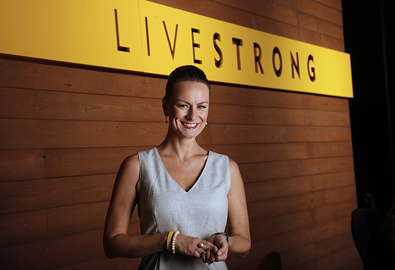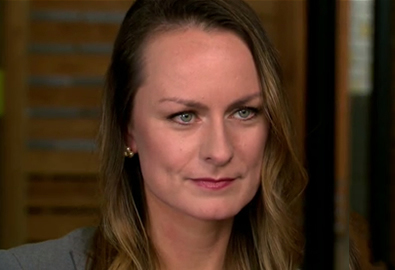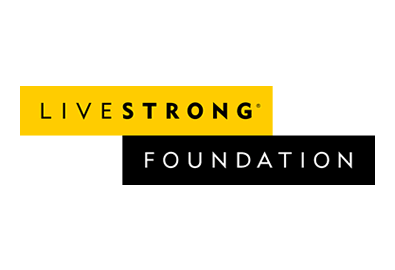After being rocked by a leadership scandal, Livestrong’s VP, comms and external affairs, is redefining the charity’s message to show it is ‘Still Strong’ without its founder.
The yellow wristband was the enduring symbol of the Lance Armstrong Foundation, the charity founded by cyclist and cancer survivor Lance Armstrong.
Worldwide it sold more than 87 million bracelets bearing the slogan Livestrong at $1 each and raised more than $500 million in the fight against cancer. The foundation created a cultural phenomenon and mobilized a legion of supporters who rallied behind Armstrong’s message of hope and perseverance.
The Lance Armstrong Foundation’s image came under threat last year when Armstrong, dogged for years by rumors of doping, admitted to using performance-enhancing drugs to win his record seven Tour de France titles. Since that revelation, Armstrong has cut ties with the organization he created, which in November 2012 changed its name to the Livestrong Foundation. The organization, along with the woman helping to reshape its message, has set off down a long road in separating itself from the fallen hero and finding a new rallying symbol.
“We see this as a rebuilding year,” says Katherine McLane, VP of communications and external affairs. “We have to redefine the brand, something that’s been closely associated with Lance Armstrong for many years.”
2007-present
Livestrong Foundation, VP, communications and external affairs
2006-2007
US Department of Education, press secretary
2005-2006
Office of Governor Arnold Schwarzenegger, deputy press secretary
2003-2005
Office of Governor Arnold Schwarzenegger, deputy communications director. Began as press advance director for Californians for Schwarzenegger in August 2003 before he was elected into office in October 2003.
2001-2003
Public Strategies, principal in the media group
McLane leads a small communications team of just three at Livestrong. Since joining the foundation six years ago, she has overseen communications strategies, external affairs, media relations, and crisis communications – “a muscle we have had to flex a lot in recent years,” she explains.
She is no stranger to hard-won battles, however. McLane began her career in Austin, TX, in the media division of PR and public affairs firm Public Strategies. While there, she worked on regulatory campaigns for some of the firm’s top clients, such as telecoms company Southwestern Bell.
Counsel to Schwarzenegger
In 2003, McLane moved to California to join the gubernatorial campaign for Arnold Schwarzenegger. “She went out there without any job offer and said ‘I’m here and I’ll work for free,’” says Mark McKinnon, her boss at Public Strategies and a board member of Livestrong. “After a couple weeks of volunteering, they saw what a talent she was.”
McLane became press advance director for Schwarzenegger’s campaign. Following his election, she served as deputy communications director and deputy press secretary to the governor during his first term.
After that, McLane moved to Washington, DC, in 2006 to join the US Department of Education as press secretary. In that role, McLane’s chief responsibility was promoting the No Child Left Behind Act, the education initiative signed into law under President George W. Bush.
The law aimed to improve the performance of students, especially minority, low-income, and disabled children, by imposing unprecedented testing requirements on the nation’s public schools. It proved to be unpopular among many schools, which saw the act as “an additional burden,” McLane says. “It came down to knowing your audience. Our audience for improving the image of that bill was not teachers. It was the parents sending their kids to schools,” she says.
After more than a year in the role, McLane wanted to return to Texas and find a “less demanding” job, she says. The Lance Armstrong Foundation hired her in 2007 to direct its communications strategy. “My idea of having weekends off was blown out of the water after taking the job,” she adds. “It’s been campaign mode almost daily since.”
McLane started at the foundation right as it kicked off a statewide campaign in support of Proposition 15, a constitutional amendment that created the Cancer Prevention and Research Institute of Texas and gave $3 billion to the facility. Other highlights include managing communications for the Livestrong Global Cancer Summit in Dublin in 2009. Last year, McLane and her team supported a campaign for Proposition 29 in California, which would have raised the tax on tobacco products to fund cancer research. The ballot failed, but by a slim margin.
Amidst these efforts, rumors about Armstrong’s use of performance-enhancing drugs had been swirling for years. Livestrong stood by its founder, even last August when the US Anti-Doping Agency (USADA) banned Armstrong from cycling and stripped him of his Tour de France titles. The ban came on the heels of his decision to stop fighting accusations that he had used steroids. The charity finally reversed course last October, when USADA released a report that accused Armstrong of driving “the most sophisticated, professionalized, and successful doping program sport has ever seen.”
Providing global support
The Livestrong Foundation primarily provides services to cancer patients and survivors in the US, but recently launched a global program to lift the stigma of cancer and raise awareness of the disease in certain countries.
The charity invested in 18 months of research to identify some of the biggest challenges for cancer patients throughout the world. Supported by the International Union Against Cancer, Livestrong conducted outreach in South Africa in 2011 and in Mexico last year.
“We saw a big shift in cultural perceptions around cancer among patients and the public,” McLane says. “We created replicable models that we can provide to other groups.”
Livestrong also teamed up with Partners in Health, an organization providing cancer treatment and healthcare services in poor countries.
“There was a moment when I came to realize that what I believed to be the truth was not,” McLane recalls. “That’s a very tough thing to swallow, especially in our business where our credibility as communicators is the tool of our trade.”
After the report was released, Armstrong resigned as chairman of the organization and stepped down from the board of directors. That fall, the charity officially rebranded as its nickname, Livestrong Foundation.
“Urging Lance to step away from the organization he created was difficult to do, but necessary for the future. As long as he was part of it, the foundation would continue to be part of this negative narrative,” she adds.
That moment was the first in a series of tough decisions for Livestrong. During this time of upheaval, McLane’s small team was fielding hundreds of media requests from around the world. In November, it hired PR agency Glover Park Group to help with crisis communications and long-term strategy.
Global media frenzy
The next big challenge came in January, when Livestrong learned it would once again be in the spotlight since Armstrong had agreed to sit down for a globally broadcasted interview with Oprah Winfrey. McLane’s staff had six days to prepare for the event. During that time, they developed a communications plan in which Livestrong’s leadership, board of directors, and cancer survivors who had used its services would speak out on behalf of the foundation. For example, CEO Doug Ulman appeared on the Today show to respond to Armstrong’s interview. “There was a little sense of relief because our organization today can finally move beyond this topic and issue,” Ulman said on the show.
“We sat down following the Oprah interview and realized there were two paths we could take,” adds McLane. “We could go dark, rest up, recover, and come back out in a few months. Or we could keep swinging because the attention provided by recent events was our best opportunity to draw attention to our mission. That’s what we did.”
That proactive approach was evident in the media coverage about Nike’s decision in May to end its partnership with Livestrong. Rather than wait for reporters to start calling, McLane’s team reached out to a few trusted journalists with the news, she says.
“Having those relationships, knowing who to call when we had to get ahead of the story, and being able to speak frankly with reporters who knew our background was a tremendous asset,” she explains. “Although it was a tough day for us, the themes we wanted in the coverage were there.”
“[McLane] had established credibility with reporters, so when things got difficult the relationships were in place to manage that story as effectively as it could be managed,” says former White House communications director Kevin Sullivan, who hired McLane at the Department of Education.
Now that media attention on the Armstrong scandal has abated, Livestrong is trying to stand apart by highlighting the fact that it provides services to cancer patients during their fights, rather than focusing on research as many other charities do.
“[McLane] has been able to rise above all the chatter and keep us focused,” says Morgan Binswanger, EVP of external strategy and government affairs at Livestrong.
Livestrong plans to launch a rebranding campaign later this year, McLane adds, declining to disclose details because they were not finalized at press time.
In May, the foundation hosted its annual Livestrong Day, using the slogan Still Strong and encouraged survivors to share their stories with friends, families, and across social media networks.
New direction
Going forward, Livestrong’s communications and marketing efforts will shift to elevate the stories of everyday people, rather than a celebrity such as Armstrong.
These new brand advocates include people such as Sarah, a 33-year-old, two-time breast cancer survivor who turned to the organization for help with fertility treatment, or Iram, who took Livestrong’s cancer and relationships class during his battle with brain cancer. Personalizing the services provided by Livestrong is a “big focus” for the organization right now, McLane adds.
“We spent a lot of time listening to our supporters last fall as the situation unfolded. We learned that people identify even more closely with the experiences of people just like them,” she says. “Hearing from someone who could be your neighbor about their cancer experience was more meaningful at times than hearing from someone who was a superstar.”
As Livestrong charts a new course independent from its founder, McLane cites a guiding principle she learned from former boss McKinnon during her first PR job, “If it’s comfortable, it’s wrong,” she explains.
“It emphasizes the fact that you have to keep pushing yourself.”


